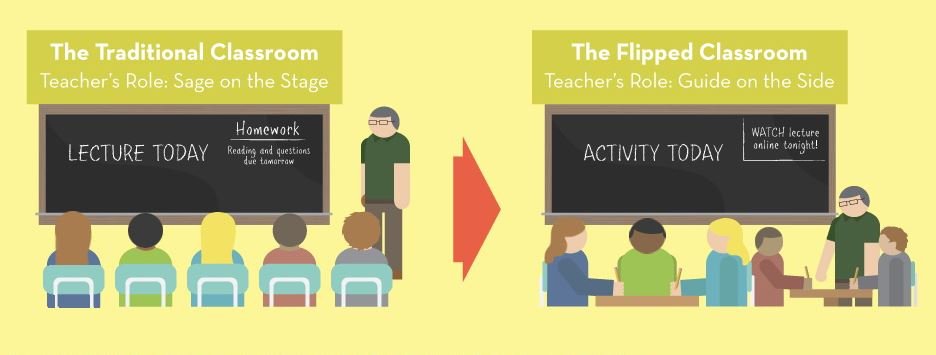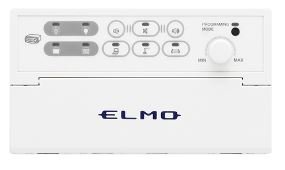“Technology is a driving force in education, opening up many doors and preparing students for what lies ahead, not behind,” said Kirsty Kelly, Primary Years Program Coordinator at the Canadian International School in Singapore. “It allows for greater differentiation, individualized learning, real world integration, and varied assessments.”
Today’s schools are changing and the incorporation of digital advances into the classroom was inevitable and necessary. To prepare students for their future, education must utilize the most advanced tools and techniques available.
“Technology must be incorporated into how [teachers] teach and assess students,” Kelly added in a phone interview with Global Citizen. “There must be a shift in mindset, for teachers, parents, and students.”
These changes are being reflected in new educational spaces.
"Students inhabit a 21st-century world for 18 hours a day," Jim Tracy, headmaster at Cushing Academy in Ashburnham, Massachusetts told US News and World Report. "And, all too often, educators put them in a 19th-century classroom for six hours of that day, and the students feel a tremendous disconnect."
Read More: 16 Classrooms from Around the world
Education institutions from Kindergarten to postgraduate programs are incorporating new technology at a rapid pace. Some classrooms are starting to look more like the movie Minority Report than the classrooms most adults today remember.
Here is a tour of the technology shaping today’s classrooms.
Creative spaces
“Stuffing schools with high tech tools isn’t the answer to offering dynamic learning experiences,” said Danish Kurani and Zoe Balaconis in an article for EdSurge, a website about the intersection between technology and education. Kurani is an architect and designer and her colleague Balaconis is the co-founder of Misadventures, a women’s outdoor adventure magazine. The two led a pilot program testing classroom designs with a public school in Columbine, Colorado.
The driving concept of the program was “new learning needs new environments.” Their pilot program redesigned a classroom to utilize technology and new teaching techniques to make education more “personalized, adaptive and real-world” focused. The new classroom had a “Skype Mountain,” a tiered sitting area where “students can sit, congregate, and connect with the world.”
Read More: Universal Access to Education Means More Than You Think
The classroom also included small discussion areas, individual, pupil directed, learning zones, and large learning galleries that can be updated to fit whatever topic is being taught.
This pilot program is one of many experimenting with new layouts for learning that will make sure that the classrooms of the future look substantially different than the ones of the past.
Projectors
Projectors on their surface are a simple technology that has been around for decades. Historically used to project lecture notes or multimedia presentations, these classroom cornerstones can do so much more.
BenQ’s “Interactive WXGA”projector displays interactive images on almost any flat surface. The flexible projector, as displayed in the video below, can be hooked up to a wide range of devices allowing instructors and pupils to fully utilize it.
Smartboards
A step beyond interactive projectors are the wide range of “smartboards” being utilized in classrooms.
Some smartboards operate just like a whiteboard, allowing a person to write on them with real or digital markers. Smartboards then surpass their simple whiteboard ancestors by recording what is written or turning a digital marker line into a tangible visual element.
Read More: Should Every School Look Like This?
Other versions, like the Promethean board in the video below, are effectively touch-enabled giant digital computer screens. These screens are as limitless as the imagination. Students can manipulate images, guide an online exploration, or control a camera in the arctic circle.
Even better, they can be mirrored through the internet, opening up engagement to students anywhere with access to the signal.
Smart tables
The sturdier cousin to the smartboard, smart tables are re-orienting information for all ages. These digital displays take information off the wall and put it on tables. Sector leaders like SMART Technologies’ “SMART Table” focus their innovation on making the display sturdier than their wall-mounted cousins and supporting more simultaneous interactions. For example, the table in the video below can handle 40 unique touch points at the same time. It is a perfect fit for a room full of eager young students.
The layout of a smart tables makes it more accessible to people of all ages and physical abilities than smartboards.
Laptops, tablets, phones, and more
The presence of computers or tablets in the classroom is fairly common in developed countries. Students have used computers to take notes in class for more than a decade. Tablets and phones are even more portable and have the same capability.
Read More: Lawrence O'Donnell Supplies Desks, Transforms Learning in Malawi
In the last few years, these devices have gained functionality and prominence in the classroom. These devices are particularly important where teachers have experimented with “flipped classrooms,” an education system where students watch videos of lectures outside of class and do assignments in class.

Individual digital devices can also be networked together or connected to a classroom’s tech infrastructure to expand opportunities for students to work together. The future of this capability is a hot topic at many teacher’s conferences around the world.
Digital textbooks
Digital textbooks are becoming more crucial as some schools are cutting back on expensive physical textbooks. Some schools are going beyond adopting a new format for education texts.
In 2009, the state of California began replacing some high-school textbooks with “open-source” digital books. And digital textbook provider Boundless estimates students at half of the United States’ universities have used their free digital textbooks.
Initially, digital textbooks were simply the old textbooks in digital form. Nowadays, the digital versions are starting to look more like online databases or programs than their paper predecessors.
Cameras
Cameras are present in almost every classroom in the United States. Often they come installed in laptops, tablets or desktops used by students. Programs like Microsoft’s Skype in the Classroom offer a wide range of educational experiences that can be accessed through these cameras.
In more advanced classrooms, higher-quality cameras are integrated with projectors or smartboards, opening up the experience to the entire class.
When cameras aren’t breaking down classroom walls, they are providing a basis for self-assessment. Students in some classes use cameras to record themselves doing an activity then watch the video to identify areas for improvement. Further, cameras – both still and video – are becoming common tools to create academic output in place of the more standard written essay.
Audio enhancements
For 40 years, schools in the US have regularly experimented with some form of audio enhancements. Historically found in auditoriums or large lecture halls, audio enhancement equipment is finding its way into classrooms of all sizes.
Audio enhancements refer to a suite of tools from high-quality speakers to wireless microphones. A full system includes easy to wear microphones transmitting an instructor’s voice to speakers in every corner of a classroom. The speakers can also be connected to a multimedia presentation or a person joining the class through a camera in a remote location. With quality speakers distributed around a classroom, each student is able to hear and absorb the information being shared.
Read More: Life as a Classroom in Syria
Educational benefits of audio-enhanced environments include higher retention from pupils, more engagement and interaction, and higher teacher energy because they are less tired from having to strain their voice day in and day out.
These systems are getting more advanced each day. Directional sound speakers enable students in different areas of a classroom to engage in activities without disturbing others. Students who have a hearing problem can tune their area speakers to provide higher amplification levels. And lectures or discussions can easily be recorded (as videos or podcasts) for later review or distribution.
Control centers
Classrooms often already have multiple streams of information available. The options are expected to continue to grow. To fully utilize the growing options, instructors need to be able to switch seamlessly from displaying a Skype chat to a documentary to a digital lecture. To enable this, systems like the ELMO CRC-1 “switcher” in the picture below are quickly becoming centerpieces in classrooms.

“One of the things that kills instructional flow is the downtime [for setup]. By integrating the Elmo into the projector and the audio enhancement it’s a smooth lesson all the way through,” said the Director of Learning Through Technology for the Charlotte County Public Schools in Florida in a video about his school system’s new high tech classrooms.
Easy to use, reliable, control centers for instructors help keep high tech classrooms operating smoothly.
Networked learning
Digital education platforms are a new form of teacher’s assistant in networked learning environments. The capabilities of these program range from enabling students to submit work electronically, to automatic assessments of some assignments, to early warning advisories to teachers if a specific student seems to be struggling.
Networked classrooms can also allow a teacher to look in on a student’s work while it is in progress by displaying the the student’s screen on their own device.
This advancement may not be as physically obvious as an ELMO control center or a smart table but it is quickly becoming the digital backbone of future instruction.
The future and appropriate use of networked learning environments is under debate by many leading experts in the field.
Classrooms in the future will need new investments of both creativity and finance. The technology is entering the industry but, of course, finance is, and will be, a barrier to building these new classrooms.
“I work in a private school with good funding – but technology is definitely an ongoing cost,” said Kelly. “At the same time, technology can replace some costs of traditional resources. It can also save administration cost and time.”
Not every school will be able to install smartboards or Skype Mountains in the next few years. Instead, they can look at updating lesson structures to fully utilize any available technology, resource sharing among students, and re-thinking their educational spaces within their budgets.
Students across the planet need the best, most up to date, education to prepare themselves for the future. And the world needs the best prepared students to have a better future.